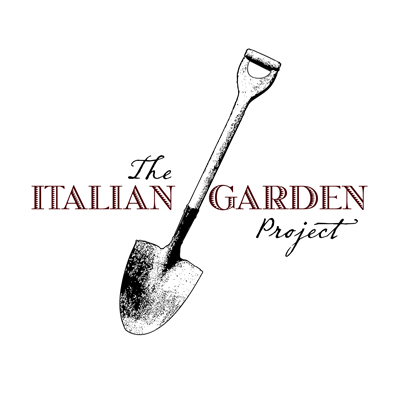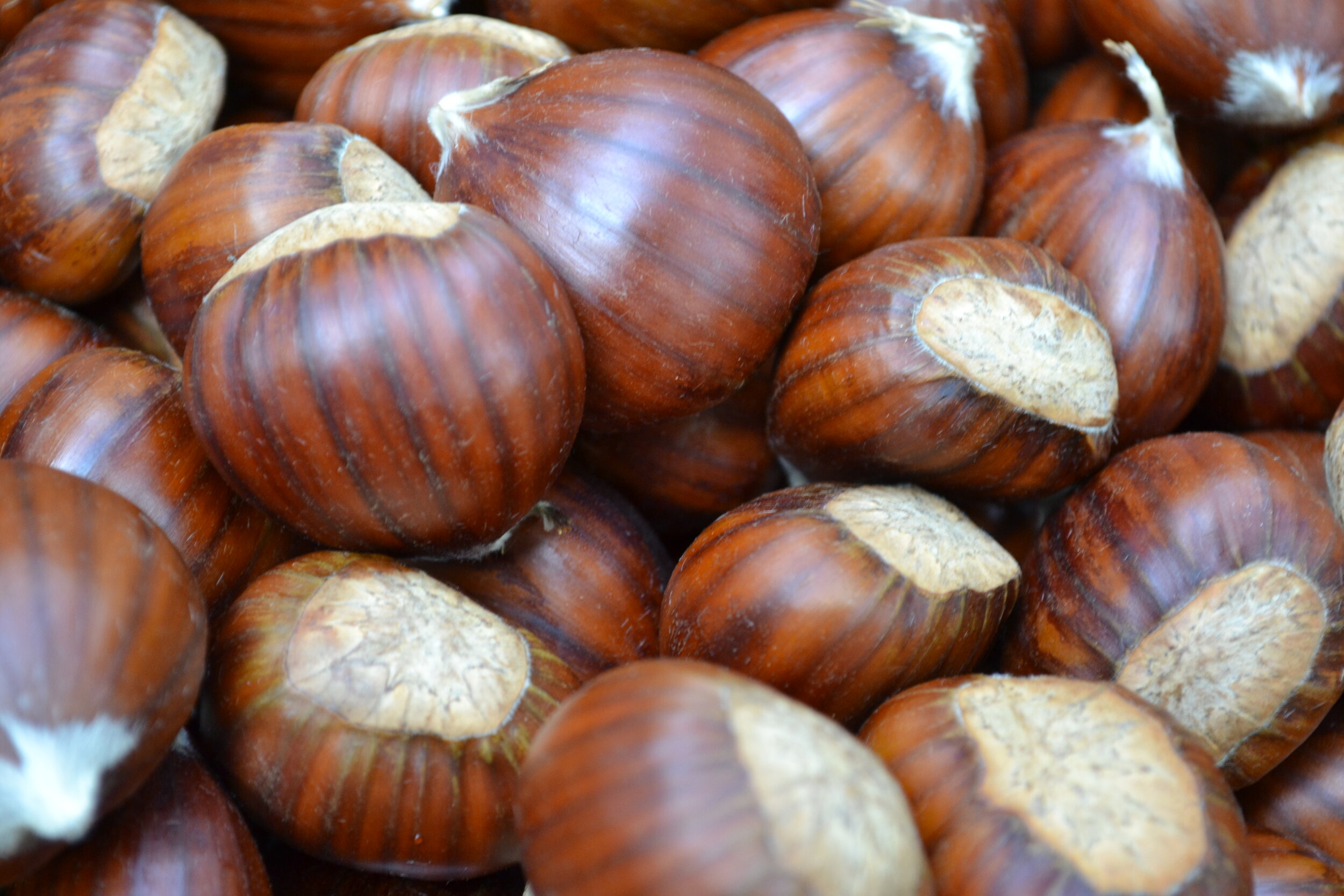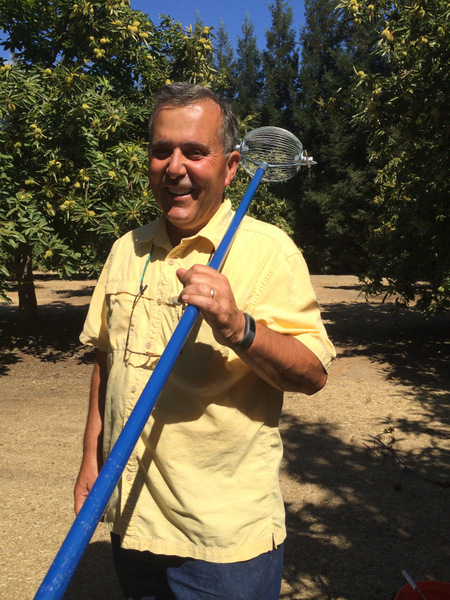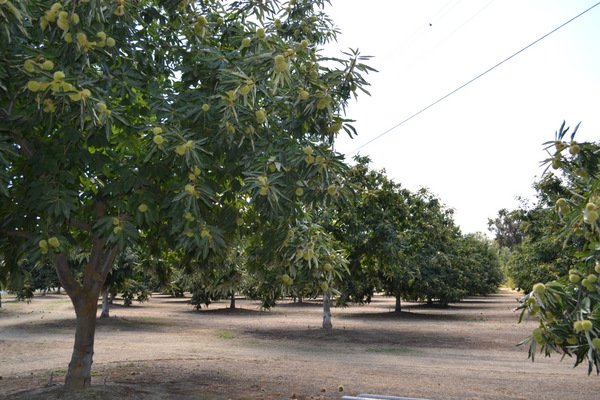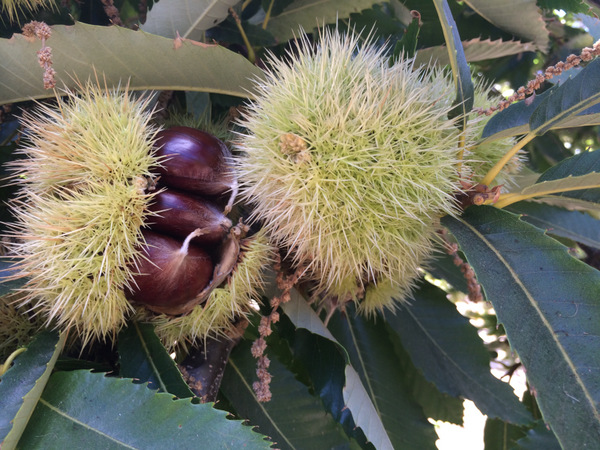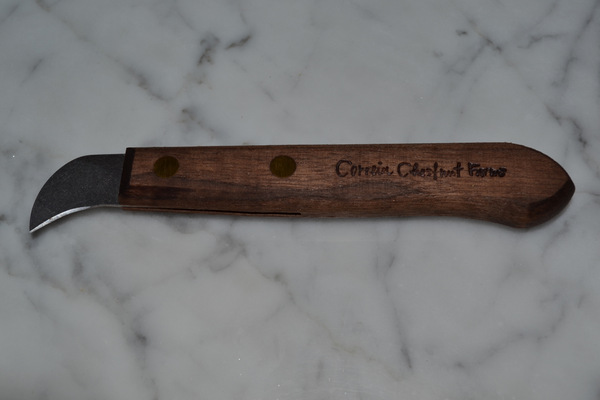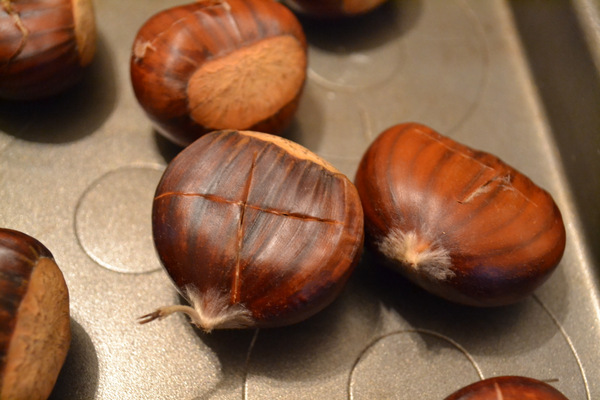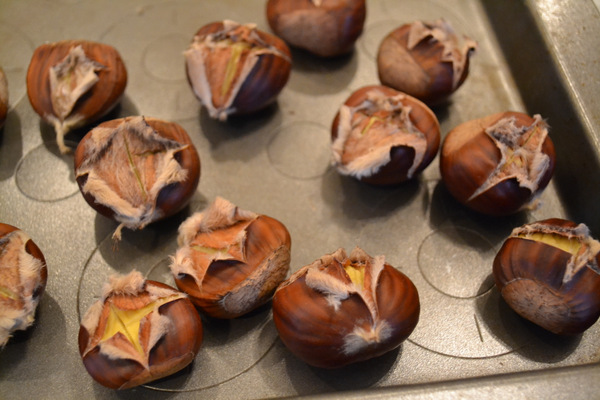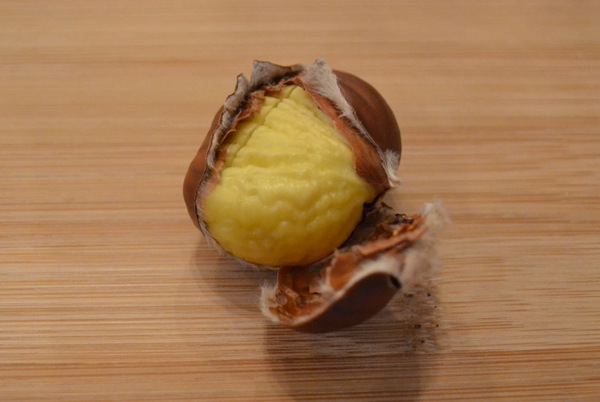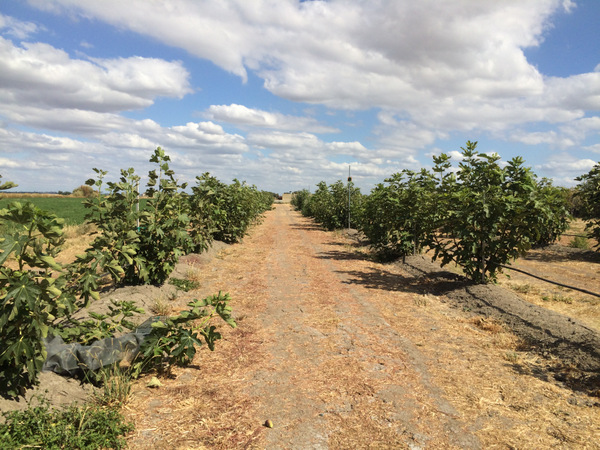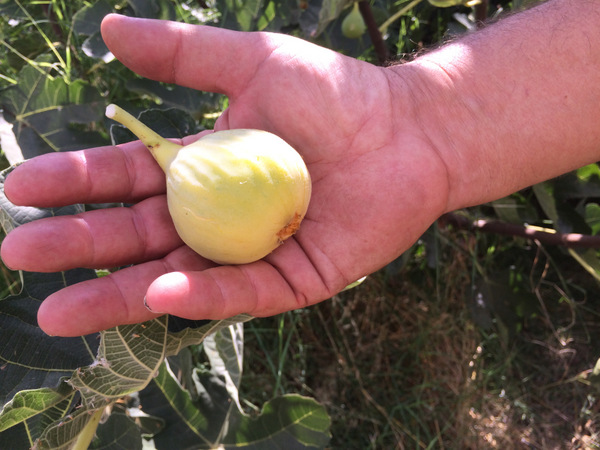Chestnuts 101
If there was anything revered as much as figs in the Italian American household where I grew up, it was chestnuts. Apparently the two are near and dear to the hearts of folks of other nationalities as well.
In my recent quest to find the perfect chestnut after being disappointed for the last several years with those available locally, I visited the chestnut and fig orchards of Harvey Correia of Isleton, California, a third generation farmer of Portuguese descent. For a chestnut and fig geek like me, spending a sunny California afternoon touring Harvey’s orchards and soaking in his expert growing advice was heavenly. He grows the most beautiful chestnuts I’ve ever seen and has over 230 varieties of fig trees!
As we walked through the meticulously maintained chestnut orchard, Harvey explained that in 2003 he began grafting Italian Marroni to his existing trees after discovering the variety during a trip to Italy. His customers liked them so much he decided to convert all of his trees to Marroni.
Chestnuts grow in burs that are excruciatingly prickly. Most of the nuts fall out and onto the ground. Unfortunately, the empty spiny burs also fall to the ground eventually and I quickly discovered that sandals are not the best footwear choice when visiting a chestnut orchard.
The nuts are picked up with this clever nut gathering device.
Correia Chestnut Farm is the only online source for Italian Marroni. They can be ordered through the website, www.chestnuts.us where you can also order one of these cute little knives that are perfect for carving the X in the nut before roasting.
The cut prevents steam from building up causing the chestnut to explode.
Chestnuts can be roasted on a cookie sheet in the oven for 20 – 30 minutes at 400 degrees. The shells pull open as seen above. They can also be toasted over a gas or wood fire in a chestnut roasting pan. This blackens the shell and makes them easier to peel. Be sure to shake the pan often to cook the nuts evenly.
With either method, peel them while they are still warm. Harvey suggests wrapping the hot chestnuts in a warm, damp towel immediately after roasting to retain the heat and moisture, then squeeze them to loosen the outer shell and pellicle (inner skin).
Shelling warm chestnuts can be fun and almost addictive when they peel easily. It’s extremely frustrating though when the inner skin clings tightly to the nut making it impossible to remove and leaves them inedible. I’ve found this to be the case with most chestnuts that I’ve purchased in stores over the past several years. According to Harvey, it’s important to refrigerate chestnuts until 3 to 6 days before you intend to prepare them. During that time they should be kept at room temperature to “cure”. Unlike other nuts, they have a high moisture content and are low in fat. The majority of grocery stores do not properly refrigerate chestnuts or do not refrigerate them at all and as a result they are often spoiled or dried out.
From the chestnut orchard, we headed over for a quick tour of the fig orchard.
Here rare varieties are grown for hobbyists who collect them. Serious fig collectors are willing to pay very high prices for coveted cuttings. Hmm, as much as my immigrant grandfather loved figs, I just can’t see him doing that.
